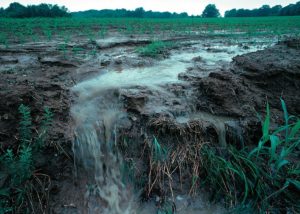Islands in the stream are making it clean
October 22, 2017
In the land-locked state of Iowa, there’s a whole new twist on island life: the city of Dubuque is installing floating islands in Bee Branch Creek.
This isn’t a tourism gimmick: the city is using specially constructed mini-islands that remove excess nutrients from the water.
What’s more, these islands — 14 of them — are made using plastic drinking bottles that otherwise would have entered the waste stream. “The wonderful symmetry is we take around 67,000 plastic bottles that otherwise would go into a landfill and instead use them to clean the water and create a floating ecosystem,” says a representative from the company creating them.
The idea is to create floating wetlands, says Autumn Boos of Midwest Floating Island in a U.S. News article:
“The man-made wetlands will be covered with more than 5,000 native plants that grow roots below the water surface. The plastic matrix and suspended root systems of sedges, wild rye, blue flag iris, New England aster, marsh marigold, swamp milkweed and cardinal flowers create an ideal growing surface for biofilm and microbes to break down pollutants such as phosphorus and nitrogen that cause serious odor and algae issues. And they will help manage and remove heavy metals and suspended solids that create murkiness in the water, Boos said.
“We’re creating a floating ecosystem. … It’s more than just a short-term fix to clean the water,” she said.
The raft-like islands will be tethered to the bottom of the creek and will adjust to the level of the river. A city official said it will equivalent to adding 10 acres of wetlands. A state loan and a grant will be used to pay for the project.
It’s a novel approach to cleaning up nutrient pollution and finding a solution for plastics that otherwise would have caused even more pollution.